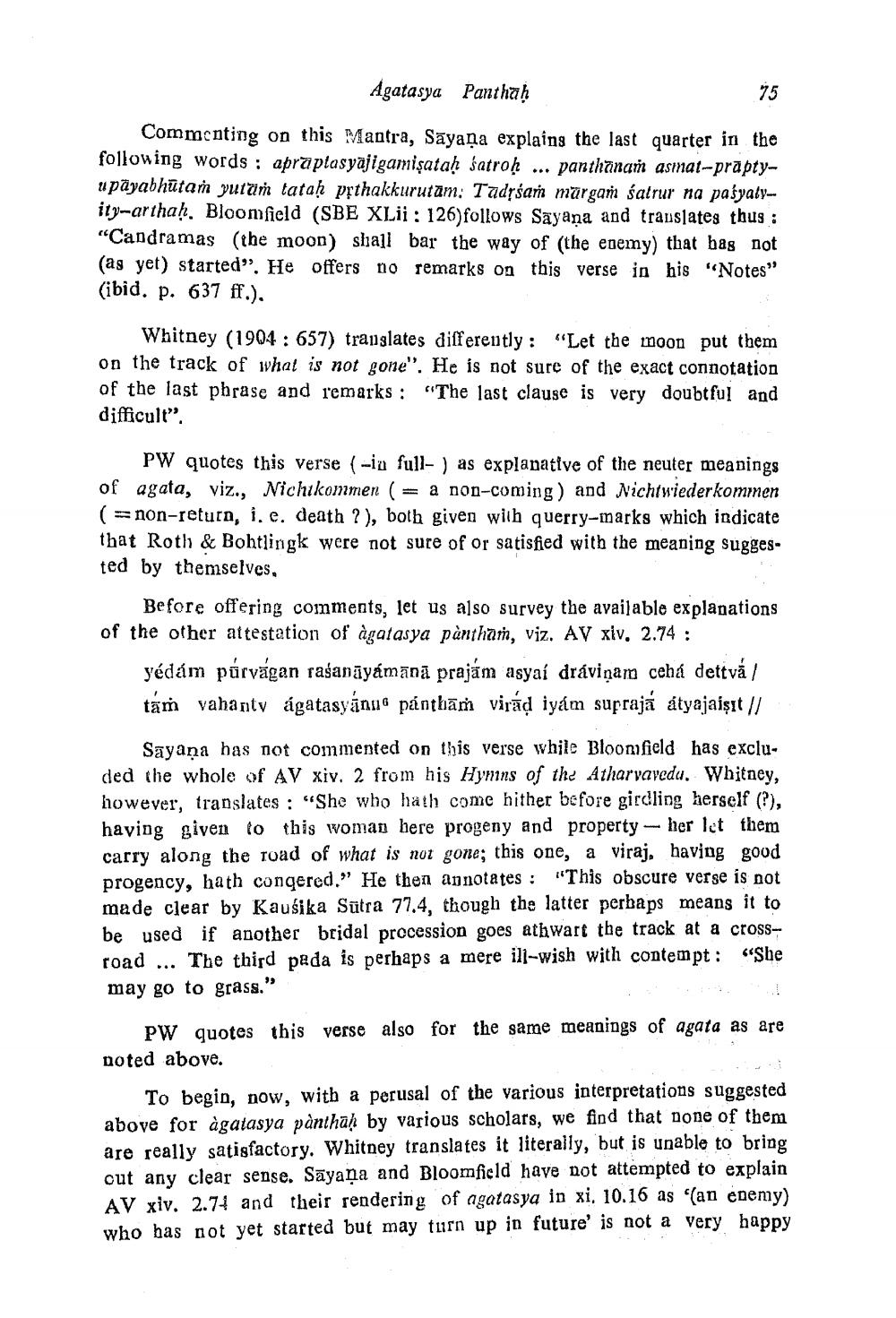________________
Agatasya Panthah
Commenting on this Mantra, Sāyaṇa explains the last quarter in the following words: apraplasyajigamişataḥ śatroń ... panthanam asmat-prāptyupäyabhūtam yutan tataḥ přthakkurutām. Tadssan murgań śalrur na paśyatyity-arthah. Bloomfield (SBE XLii: 126) follows Sayana and translates thus : "Candramas (the moon) shall bar the way of the enemy) that has not (as yet) started”. He offers no remarks on this verse in his "Notes" (ibid. p. 637 ff.).
Whitney (1904: 657) translates differently: "Let the moon put them on the track of what is not gone". He is not sure of the exact connotation of the last phrase and remarks: "The last clause is very doubtful and difficult”.
PW quotes this verse (in full- ) as explanative of the neuter meanings of agata, viz., Nichikommen ( = a non-coming) and Nichtwiederkommen (=non-return, i, e. death ?), both given with querry-marks which indicate that Roth & Bohtlingk were not sure of or satisfied with the meaning suggested by themselves,
Before offering coinments, let us also survey the available explanations of the other attestation of agatasya pántham, viz. AV xiv, 2.74 :
yédám púrvágan rašanāyámānā prajấm asyaí dráviņam ceha dettvá / tám vahanitv ágatasyánuo pánthāṁ virád iyam suprajá átyajaiștt //
Sayana has not commented on this verse while Bloomfield has excluded the whole of AV xiv. 2 from his Hymns of the Atharvavcdu. Whitney, however, translates : "She who hath come hither before girdling herself (), having given to this woman here progeny and property - her let them carry along the road of what is not gone; this one, a viraj, having good progency, hath congered." He then annotates: "This obscure verse is not made clear by Kausika Sūtra 77.4, though the latter perhaps means it to be used if another bridal procession goes athwart the track at a crossroad ... The third pada is perhaps a mere ill-wish with contempt: “She may go to grass."
PW quotes this verse also for the same meanings of agata as are noted above.
To begin, now, with a perusal of the various interpretations suggested above for ágatasya pánthaḥ by various scholars, we find that none of them are really satisfactory. Whitney translates it literally, but is unable to bring out any clear sense. Sāyaṇa and Bloomfield have not attempted to explain AV xiv. 2.74 and their rendering of agatasya in xi. 10.16 as an enemy) who has not yet started but may turn up in future' is not a very happy




